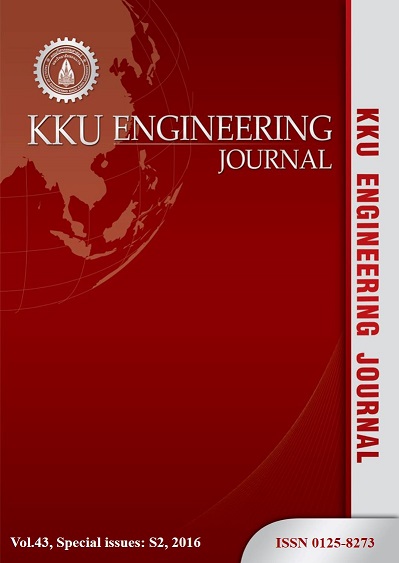The effect of mixture and size of fish food on the fish food qualities producing from the waste of agriculture and fishery
Main Article Content
Abstract
The remnant of fish and the bran are the waste in the community that earns one’s living from the fishery in net cages. These wastes cause the cost of management and the pollution. Hence, this research studied the fish food production from the waste in the community using the pellet fish food (PFF) producing machine. The water content in fish food at the amount of 140, 160 and 180 g, the diameter size of 4 and 6 mm and the compression ratio (CR) of 2.5 and 3, and including the drying kinetic of PFF at drying temperature of 50oC were also studied. The PFF qualities were estimated with the pellet durability index (PDI), the pelleting efficiency and the weight loss of PFF in water. Study results showed that the decreased trend of PDI value with the increment of the water content for every pellet size and the CR. The PDI value at the same pellet size increased with the enhanced CR due to the improvement of density within the pellet. The pellet size of 4 and 6 mm should be produced at the CR of 2.5 with the water content of 140 g and the CR of 3 with the water content of 160 g. Under the previous condition, the maximum value of pelleting efficiency was about 92-93%. For the CR in the range of 2.5 to 3, the percentage of weight loss of PFF was 14-27% and 16-26% for the pellet size of 4 mm and 6 mm, respectively. The PFF in this study spent the drying time around 3-6 hours for the moisture reduction approached the commercial pellet fish food.
Article Details
How to Cite
Srisang, N., Kongbankuan, U., Jarong, N., & Srisang, S. (2016). The effect of mixture and size of fish food on the fish food qualities producing from the waste of agriculture and fishery. Engineering and Applied Science Research, 43, 183–186. retrieved from https://ph01.tci-thaijo.org/index.php/easr/article/view/70179
Section
ORIGINAL RESEARCH
This work is licensed under a Creative Commons Attribution-NonCommercial-NoDerivatives 4.0 International License.



